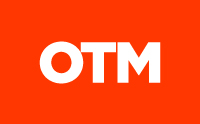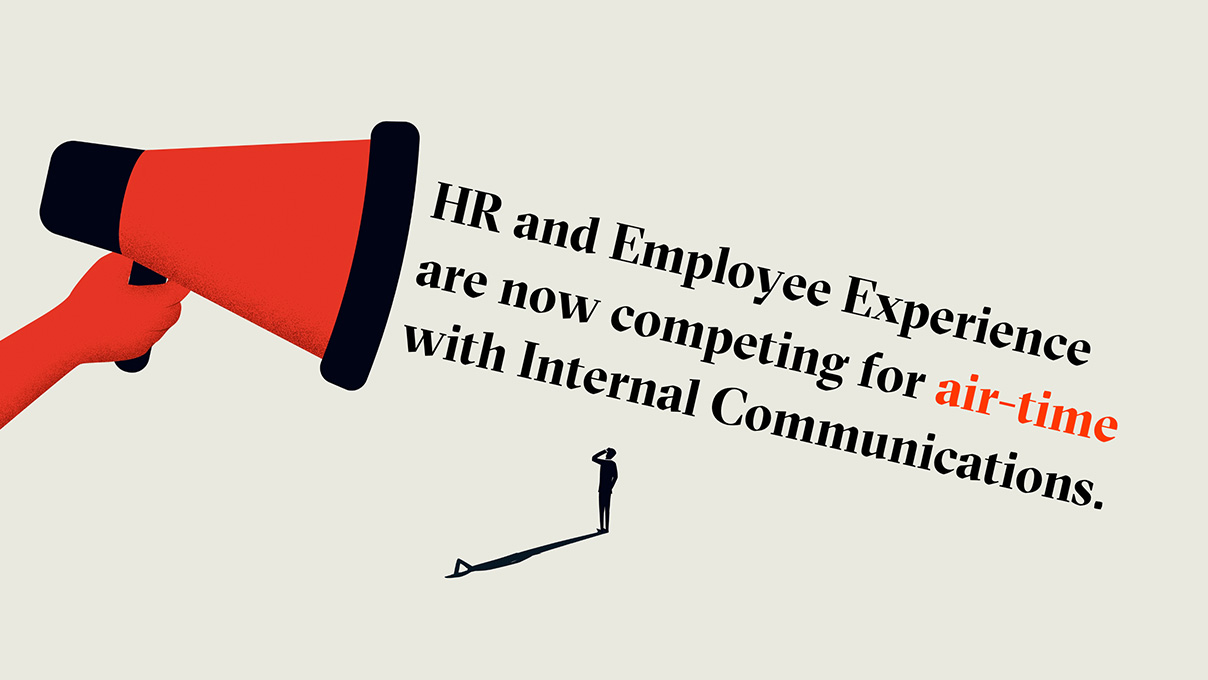Changes to working life in a post-pandemic world are pushing the ‘People Profession’ of Human Resources (HR) and ‘Employee Experience’ to the fore, like never before – with a growing ‘To-Do’ list that’s having to respond to seismic cultural and technological changes in the way we work as individuals – but also how we interact with colleagues within our organisations through digital transformation.
Depending on where you look, opinions range from those that believe we’re entering a new golden age for HR – to it being a once in a lifetime opportunity to reframe how we work that we can’t possibly afford to miss. It’s certainly true that much has been written about the effects of Covid-19 on ‘the future of work’, ‘wellness’, mental health, ‘the return to offices’ along with ‘hybrid’ or flexible working. Add-in ‘leader visibility’ and many more topics besides and the whole subject of effective communication within organisations is becoming complex and increasingly mired.
What’s clear is that the changes are both challenging and exciting – although in the plethora of post-pandemic predictions, we might just be in danger of overlooking a key aspect that Human Resources will need to actively address – how to ensure the new, involved HR communications both land in plain sight, and that they actively engage with employees.
What role does HR play in internal communications?
Even before the pandemic, it was freely acknowledged that employees were being bombarded with near endless internal communications that make achieving any ‘cut-through’ virtually impossible. There are some obvious reasons for this including limited availability of channels (email mostly), an over-reliance on ‘top-down’ cascading of messages and a troubling habit that has used ‘delivery’ as the key performance indicator, and ‘engagement’ as the litmus paper to gauge the collective ‘frame-of-mind’ of employees.
Business software firm ‘Sage’ surveyed 500 senior HR and People leaders for their 2020 report, ‘The changing face of HR’ and considered the growing role of ’employee experience’. This report starts to hint at some of the contradictions and confusion in the sector, particularly when it comes to the word engagement.
The report cites that: Over a third of HR leaders have already adopted new ways of working, such as becoming more agile through continuous conversations and coaching as part of performance management’ and goes on to point out, ‘40% of HR and People Leaders are now using pulse surveys to monitor employee engagement.
But as Paul Burin, VP of Sage People states:
“Forget engagement –it’s all about experiences. For too long companies have focused on engagement. Yet it is not the cause, but the effect. 92% of employees told us a great workforce experience was the single biggest driver for productivity. Great workforce experiences drive engagement, which improves performance.”
While we’d agree with the sentiment of the article that ‘engagement’ here is the effect – the findings are still largely predicated on the assumption that engagement is the ultimate measure of HR communications effectiveness – as an outcome score or a KPI. To move forward in the new business environment, we must separate engagement from being the bellwether of ‘a likelihood to promote the business’. The latter is not automatically an outcome of the first.
With the advent of NPS, eNPS and employee engagement benchmarking – arguably, we stopped engaging with individuals successfully. These broader indicators become the de facto expression (albeit wrong) of overall engagement by employees, ignoring the reality on the ground, backed-up by countless pieces of research that continue to show that staff aren’t opening communications – let alone, engaging, reading and acting upon them.
The ‘engine’ of internal communications – the channels such as email – is creaking. This explains the rapid rise in the adoption of new app-based platforms, but this demands new ways of thinking about how we communicate. We can’t keep pushing increasingly complex messages down the same, inevitably bunged-up corporate comms. pipes and expect them to land – and then engage – on arrival.
Compounding this problem in more recent years, the general business response has been to pile up more and more messages heralding more and more new initiatives, stuffing-up inboxes and other channels even more.
With the role of HR set to become pivotal, we’re now competing in an increasingly hectic internal marketplace for ‘air-time’.
So, as ‘people professionals’, how do we ensure that our important communications on ‘wellness’, ‘mental health’ and new ways of working for example, land via those increasingly busy channels and what are the true drivers of engagement?
Value, Relevancy and Consistency.
Let’s just be clear. In the context of this article, engagement, is about ensuring that messages not only get through – but that they add value to an individual employee (or cohorts) and affect change in business behaviours.
You’d be forgiven for thinking that this sounds like the domain of colleagues in the marketing department or specifically, internal comms. and it may be that you can call upon their help to drive engagement with HR messages. But as we’ve discussed, many organisations are already awash with near endless communications, covering all subjects from Brand, Customer Value Proposition, Training, Complaints, Key Performance Indicators and Performance Frameworks – through to the blocked Men’s loos on Level 4.
So, what’s changed?
Within the busy internal communications arena, there is now the imperative to ensure the new, important, and at times complex HR-based initiatives are communicated effectively to a fragmented, largely exhausted audience – when the existing routes to employees are already full, with an abundance of competing information.
In his recent article for Forbes, Dhiraj Sharma discusses the ‘Future of Work’ and pointedly reflects on the current state of employee comms:
“Employees are disconnected, tired, not aligned and confused. They get too many emails. Slack messages are also too noisy. Company meetings over Zoom are excruciatingly boring. Employees aren’t retaining everything today – and we’re about to ask them to drink from a firehose.”
‘People Communications’
To create meaningful ‘HR value’ for employees, we must ensure that above all else, we are being highly relevant to our audiences, with communications presented in a way that are 100% consistent – clear and simple – so employees know where the messages emanate from and what action is required.

Significantly, many of the new HR areas of influence (including ‘wellness’, ‘mental health’ and the ‘future of work’), transcend the pre-existing organisational structures, requiring new ways of approaching employees. As we’ve seen, we need to maximise our opportunities to deliver messages successfully and achieve the very necessary engagement with colleagues that HR now requires in its increasingly influential post COVID-19 role.
Helpfully, there are three key areas that can be quickly explored to bring the new HR communications to life:
- Audiences
Consider employees as unique audience groups with specific needs and motivations first – not simply by rank, role and place – adapting the messages accordingly in response to their needs – to maximise the value to them as individuals and cohorts.- Use a simplified, proven approach that is quick to start, enabling you to understand just how your intended audience responds to the key subjects that you want to talk about – what are their specific needs and motivations – and importantly, how do views vary – do they follow a pattern that reflects your organisational structure or ignores it all together?
- Using this insight, develop simple frameworks to clarify and nuance your messages to ensure that maximum HR value is being offered to employee audiences by understanding what’s relevant to them. Demonstrating an appreciation that it is not a ‘one-size-fits-all’ response, builds both trust and empathy
- The combination of maximum ‘value’ (is it useful?) and ‘relevancy’ (to every individual) gives HR’s messages the best opportunity to be seen when delivered through the businesses communications channels and to resonate with its intended audience
- Consistency underpins the communications with clear, grounded messages that meet the audience needs – but is also enhanced by careful application of the brand.
- Brand
Positively explore the wider available graphic elements within the brand identity suite of assets to ensure that HR is distinctive and highly visible within the plethora of other internal corporate communications. - Content
Take advantage of the exciting developments in content assets that are impossible to ignore – such as video, Augmented Reality and motion graphics – as well as introducing new channels, apps and platforms where practically possible within the enterprise.
One more thing
A small positive outcome of the COVID-19 pandemic, and all those endless Zoom or Teams video calls, is that access to senior leadership is now much more common, quicker and more efficient – and this should be capitalised upon moving forward. The practical barriers of travel, availability and let’s be frank, ‘importance’, have been removed for the most part, enabling all strata within a business to meet and discuss audiences, brand and value propositions – positively and effectively.
‘Future working’ dominates the HR forums currently and this new-found ready-access to senior leaders and decision-makers should be ring-fenced and protected like the precious commodity it really is to underpin and enhance HR communications.
Conclusion
We probably are at the dawn of a new golden age for the ‘people profession’ and as you’d expect, that comes with challenges – sometimes in unexpected places.
To ‘stand-out’ and develop its visibility and profile, HR has to go toe-to-toe with the rest of the internal corporate and operational communications. We really are competing for ‘air-time’ and we cannot simply rely on the existing internal comms. engine to cope with the added pressure.
More importantly, given the importance of subjects such as ‘mental health’ for example, we must be empathetic, which means understanding our audiences in ways beyond pre-existing enterprise demographics.
Finally, to quote Dhiraj Sharma from Forbes once again:
The companies with the cleanest internal communications strategies will be the most likely winners when we finally land in the future of work, post-pandemic.”
Now, as never before, this applies equally to HR in its need to be heard – to achieve the genuine employee engagement now required.
OTM, January 2022.
If you would like to find out more about ‘People Communications’ that add HR value, we’d love to hear from you. jenniegerry@otmcreate.com

